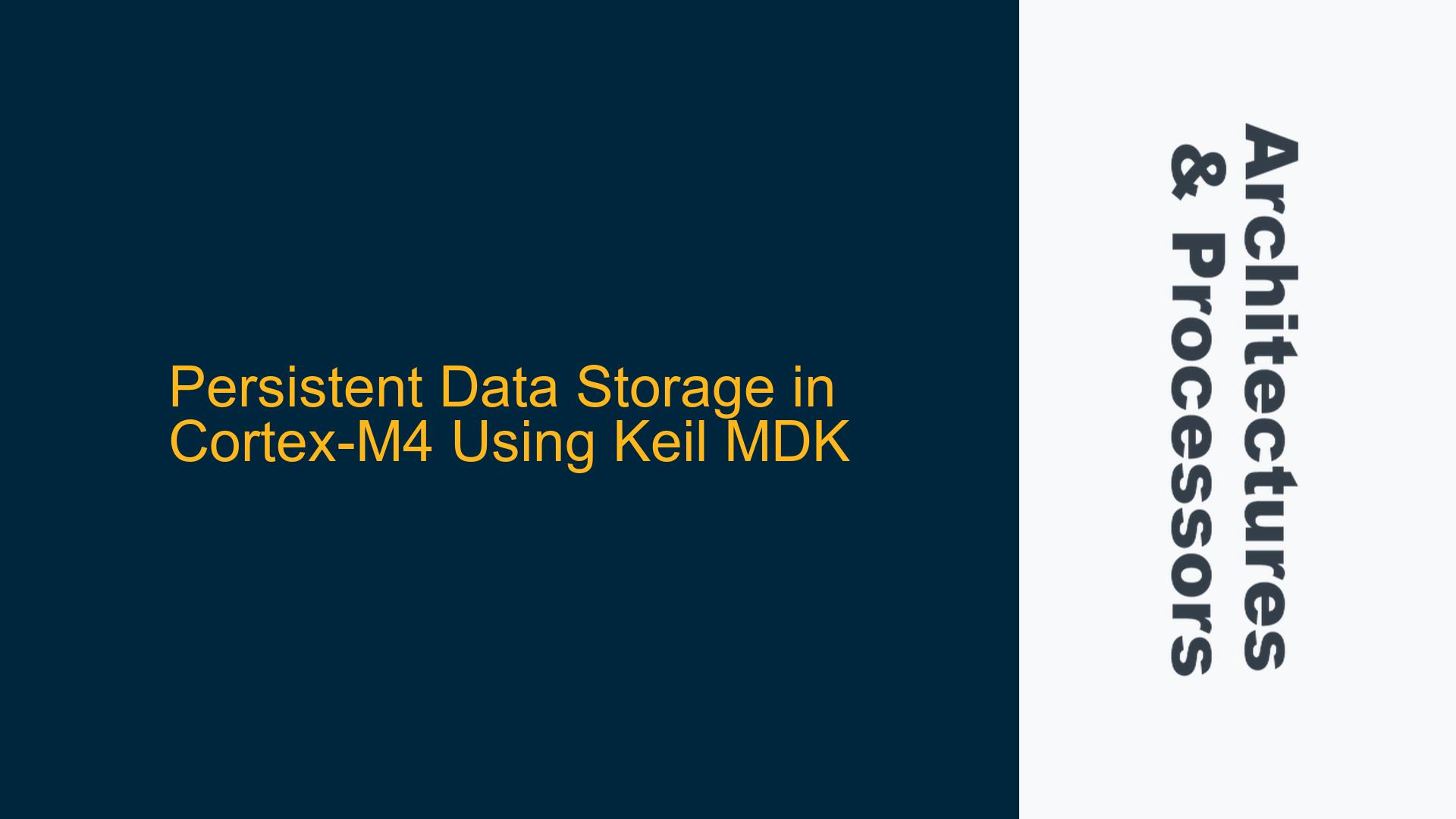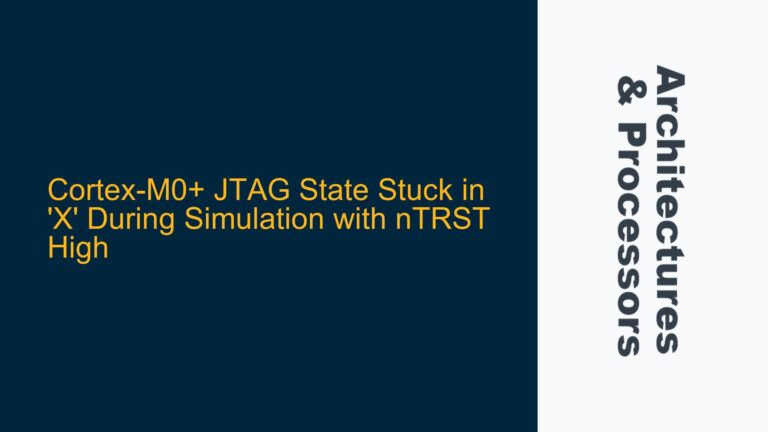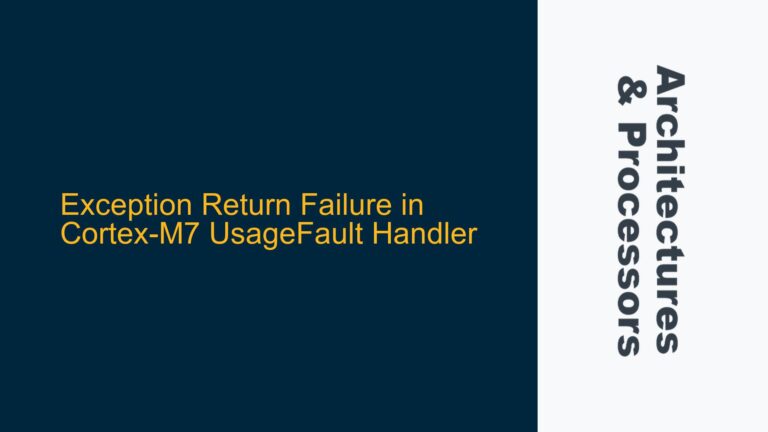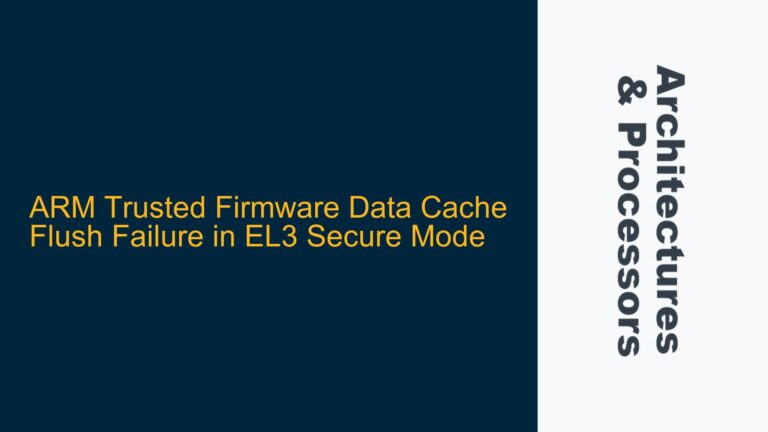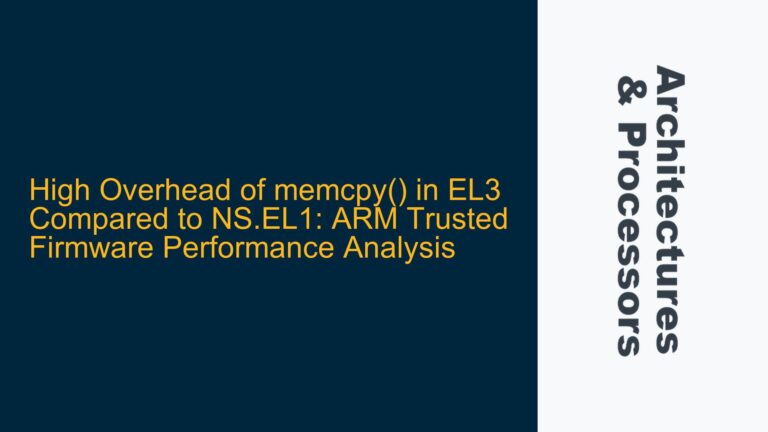Persistent Data Storage Requirements for Password Management in Cortex-M4
When designing a system that requires persistent data storage, such as password management in an embedded system based on the ARM Cortex-M4 processor, several key considerations must be addressed. The primary requirement is to ensure that data remains intact even after the device is disconnected from electrical power. This necessitates the use of non-volatile memory (NVM) to store the passwords. The Cortex-M4 processor, commonly used in embedded systems, does not have built-in NVM, so external solutions must be employed. The Keil Microcontroller Development Kit (MDK), including versions 4 and 5, provides tools and libraries that can facilitate the implementation of such solutions.
The challenge lies in selecting the appropriate type of NVM, understanding the programming interface, and ensuring data integrity over time. The Cortex-M4’s memory map includes regions for SRAM, peripherals, and external memory interfaces, which can be leveraged to interface with external NVM devices such as EEPROM or Flash memory. Additionally, the Cortex-M4’s power management features must be considered to ensure that data is not lost during power transitions.
Memory Type Selection and Interface Considerations
The choice of memory type for persistent data storage in a Cortex-M4 system is critical. The two most common types of NVM used in embedded systems are EEPROM and Flash memory. EEPROM offers byte-level erase and write capabilities, making it suitable for frequent updates of small data sets, such as passwords. Flash memory, on the other hand, is typically organized in larger blocks and requires block-level erase operations, which can be less efficient for small, frequent updates but offers higher density and lower cost per bit.
When interfacing with external NVM, the Cortex-M4’s Flexible Static Memory Controller (FSMC) or Quad-SPI (QSPI) interface can be used. The FSMC provides a flexible interface for connecting to various types of memory, including SRAM, NOR Flash, and PSRAM. The QSPI interface is particularly useful for connecting to serial Flash memory, offering high-speed data transfer rates and a reduced pin count.
In the context of password management, EEPROM is often the preferred choice due to its ability to handle frequent write cycles without significant degradation. However, if the system requires larger storage capacity, such as for storing multiple passwords or additional user data, Flash memory may be more appropriate. The choice of memory type will also influence the software design, particularly in terms of wear leveling and error correction.
Implementing Persistent Data Storage in Keil MDK
To implement persistent data storage in a Cortex-M4 system using Keil MDK, the following steps should be taken:
-
Memory Initialization and Configuration: The first step is to initialize and configure the external NVM device. This involves setting up the memory interface, such as FSMC or QSPI, and configuring the memory parameters, including address mapping, timing, and access modes. In Keil MDK, this can be done using the Device Configuration Wizard or by directly writing to the relevant registers in the startup code.
-
Data Write and Read Operations: Once the memory interface is configured, the next step is to implement functions for writing and reading data to and from the NVM. For EEPROM, this typically involves writing individual bytes or small blocks of data. For Flash memory, data must be written in larger blocks, and care must be taken to manage erase operations to avoid data corruption. In Keil MDK, these operations can be implemented using the CMSIS (Cortex Microcontroller Software Interface Standard) drivers or custom functions.
-
Data Integrity and Error Handling: Ensuring data integrity is crucial in a password management system. This can be achieved through the use of checksums, error correction codes (ECC), or redundant storage. In Keil MDK, the CMSIS-RTOS (Real-Time Operating System) can be used to implement background tasks that periodically check data integrity and perform error correction if necessary.
-
Power Management and Data Retention: The Cortex-M4’s power management features, such as low-power modes and backup registers, should be utilized to ensure that data is not lost during power transitions. The Backup SRAM (BKP SRAM) and Backup Registers (BKP) can be used to store critical data that must be retained during power loss. In Keil MDK, the Power Management API can be used to control the processor’s power modes and manage data retention.
-
Security Considerations: Password management systems must also consider security aspects, such as encryption and access control. The Cortex-M4’s Memory Protection Unit (MPU) can be used to restrict access to sensitive memory regions, and cryptographic libraries can be integrated into the firmware to encrypt stored passwords. In Keil MDK, the ARM mbed TLS library can be used to implement encryption and secure storage.
-
Testing and Validation: Finally, the implemented solution must be thoroughly tested and validated to ensure that it meets the requirements for persistent data storage. This includes testing under various power conditions, stress testing the memory interface, and validating data integrity over time. In Keil MDK, the µVision debugger can be used to simulate power loss and verify data retention.
By following these steps, a robust and reliable persistent data storage solution can be implemented in a Cortex-M4 system using Keil MDK. This solution will ensure that passwords and other critical data are retained even after the device is disconnected from electrical power, providing a secure and user-friendly experience.
